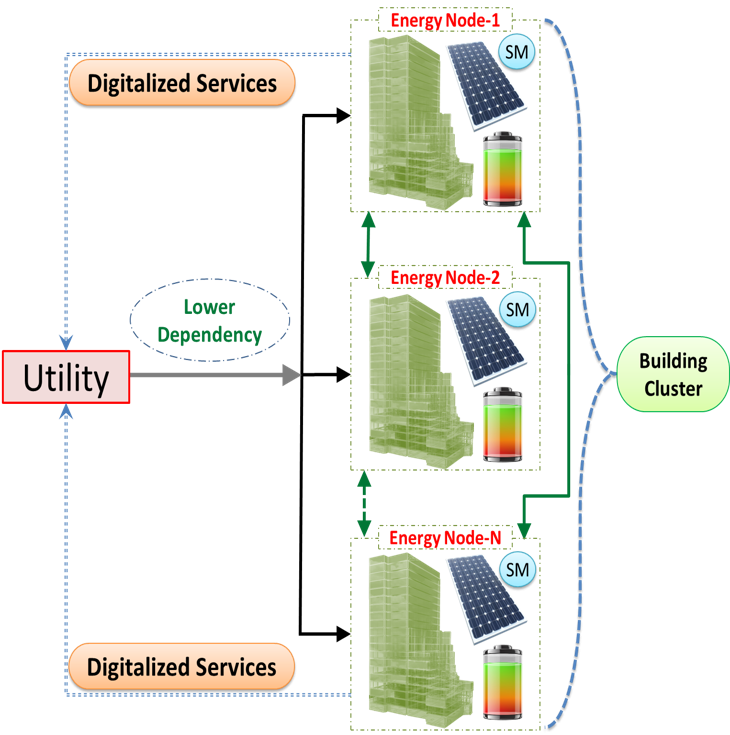Intelligent Grid Interface System for Utility-Customer Power Quality Control
The flow of electrical power in future distribution grid will be more bi-directional with increasing incorporation of local renewable generation, with significant implication on power quality which affects both utilities and the customers, the latter being individual building or community-scale cluster of buildings. Customers’ loads can generate different kinds of power quality disturbances, such as harmonics, poor power factor, voltage flicker, sags, swells, interruptions, sharp fluctuations in power flow, besides customers-side faults.
These disturbances get distributed to other parts of the utility grid through the point of common coupling (PCC), affecting other customers and causing resonances and instabilities in the grid. While the disturbances from each building may be relatively small, the aggregate effect from tens of thousands of buildings can be significant and may cause power system failure. If monitored, these buildings could in turn be instrumental in displacing the spinning reserve capacity needed.
This project focusses on the development of intelligent grid interface system on the building side at the PCC to the grid. The project designs and demonstrates the system using experience gained in SinBerBEST 1 and based on power systems, power electronics, sensing, control and energy storage technologies. Working in conjunction with the building’s energy nodes, the controller that interfaces to the grid draws well defined and contracted demand power, with negligible disturbances fed to the grid.
The interface allows participation and withdrawal of energy nodes of the buildings while providing high quality of services. It interconnects various energy nodes to share energy resources as a cluster of buildings, with the objective of being energy efficient and resilient.
